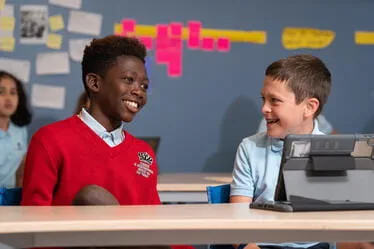I was delighted to come back to school this week and see the joy in the interactions between the adults and the children - everyone was so happy to be re-united after the holiday.

I was delighted to come back to school this week and see the joy in the interactions between the adults and the children - everyone was so happy to be re-united after the holiday.

We were delighted to come back to school this week and see the joy in the interactions between the adults and the children - everyone was so happy to be re-united after the holiday.
I was delighted to come back to school this week and see the joy in the interactions between the adults and the children - everyone was so happy to be re-united after the holiday.
It was the perfect time, as a staff, to reflect upon our image of the child and we spent time discussing our beliefs about children, childhood and the role of school in society. These beliefs affect everything we do, greatly impacting what we do in the classroom.
As educators we examine our beliefs and stand by them so that what we are doing is consistent with those beliefs, thus having an alignment in beliefs and practice.
Each of us holds deep down an image of the child. This image has many reflections. First, there is the subjective, personal one, the one known from our individual experiences as a child. Then there is the objective, empirical one, the one constructed from observing and thinking about children we meet in our journey through life. But the strongest image of all is perhaps the cultural one, the one that is shaped by values and beliefs about what childhood should be by society and family values of the people involved. Every society has particular hopes for children and certain expectations of children.
We considered the following fundamental questions that can give shape to your view of the child and create a foundation for the vision upon which our school will function.
Let me share some of my thoughts on the various images of the child.
To begin, there is an image of the child as a knowledge, identity and culture reproducer. This image of the child sees the young child as starting life with and from nothing, as ‘an empty vessel.’ The metaphor which can be used to describe this image of the child is that of climbing the ladder, where each stage of life is preparation or readying for the next and important stage where the challenge lies in having the child ‘ready for school.’
There is another image of the child as innocent in the Golden Age of life. This image of the child is seen through a misty haze of sentimentalization, almost a utopian vision where childhood is seen as the Golden Age. This image of the child generates in adults a desire to shelter children from the corrupt surrounding world. Swedish researcher Gunilla Dalhberg has expressed that if we hide children away from a world in which they are already a part, then we not only deceive ourselves but do not take children seriously and respect them.
Another image of the child is the child as nature or the scientific child of biological stages. This is Piaget’s child with an expectation that children will accomplish particular aspects of learning and development at particular ages ‘at a normal stage of development.’ This image of the young child is reflected when parents and teachers try to have children achieve the same results at a particular chronological age. Perhaps we can question in this image of the child: do we concentrate on what children can’t do, rather than celebrate and build on the successes of what they can do?
The following is the image of the child as written by Loris Malaguzzi, revisited by Carlina Rinaldi (Rinaldi, 2006, p.83).
“One of the focal points of the Reggio Emilia philosophy, as Loris Malaguzzi wrote, is the image of a child who, right from the moment of birth, is so engaged in developing a relationship with the world and intent on experiencing the world that he develops a complex system of abilities, learning strategies and ways of organising relationships. This is:
A child who is fully able to create personal maps for his own social, cognitive, affective and symbolic orientation.
A competent, active, critical child; a child who is therefore ‘challenging’, because he produces change and dynamic movement in the systems in which he is involved, including the family, the society and the school. A producer of culture, values and rights, competent in living and learning.
A child who is able to assemble and disassemble possible realities, to construct metaphors and creative paradoxes, to construct his own symbols and codes while learning to decode the established symbols and codes.
A child who, very early on, is able to attribute meanings to events and who attempts to share meanings and stories of meaning.”
At the heart of this system is the powerful image of the child. Children are not empty vessels that require filling with facts. Rather children are full of potential, competent and capable of directing their interests and building their own theories.
I wonder how you would respond to the questions above?
- Ms Clair Wain
References
Rinaldi, C. 2006. In Dialogue with Reggio Emilia: Listening, Researching and Learning. New York: Routledge.